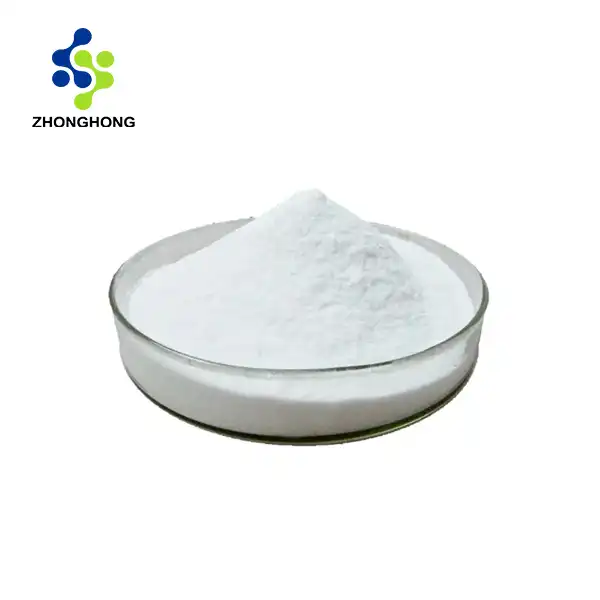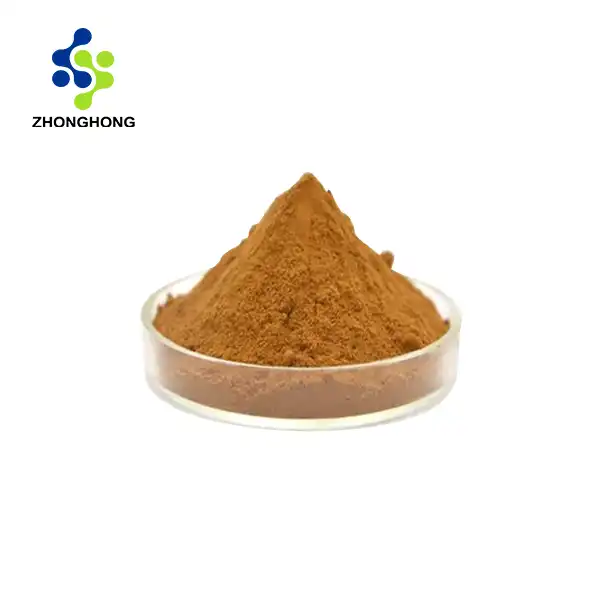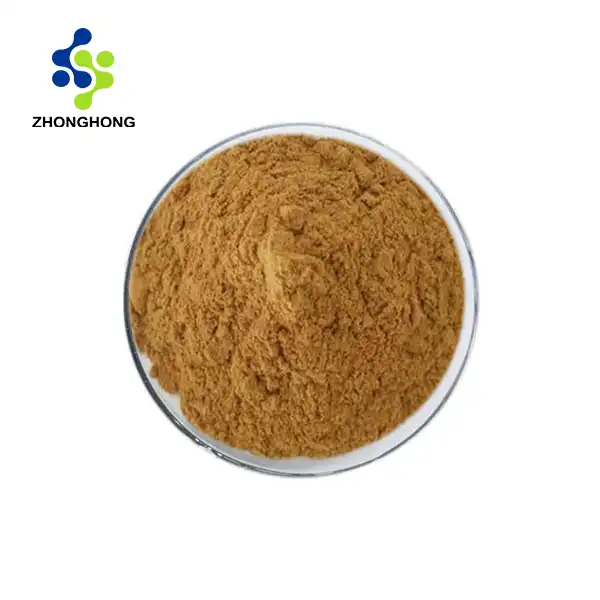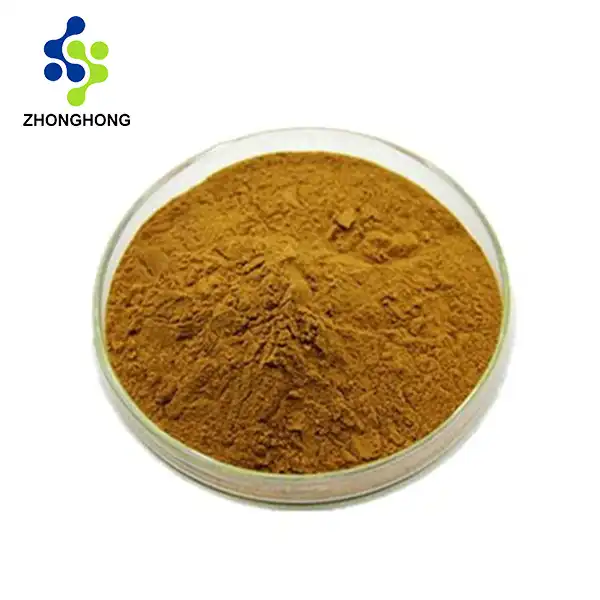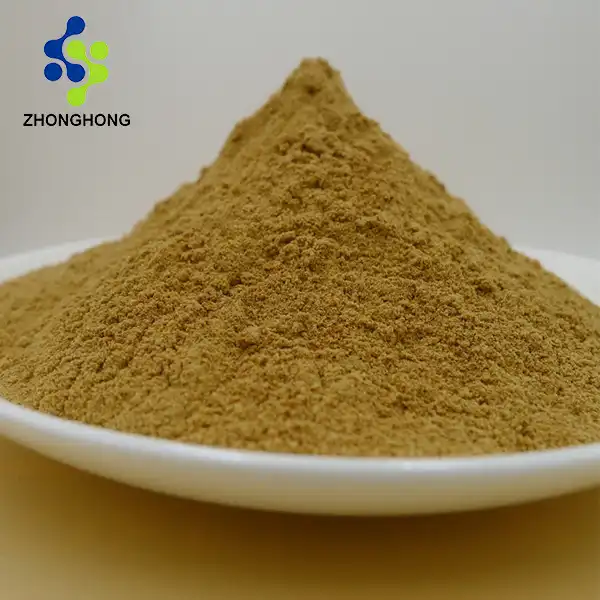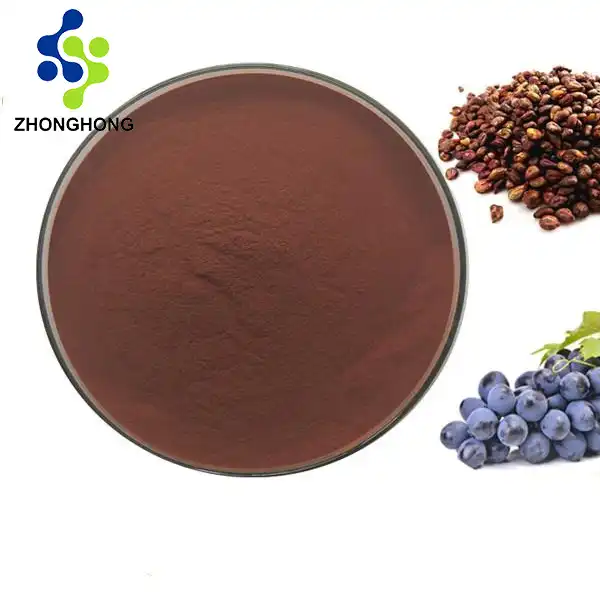what are the health benefits of Epimedium grandiflorum?
2025-01-26 20:52:42
Epimedium grandiflorum, also known as horny goat weed or barrenwort, has gained significant attention in traditional medicine and modern research for its remarkable health benefits. This perennial flowering plant, native to Asia, has been used for centuries in traditional Chinese medicine and continues to intrigue researchers and health practitioners worldwide for its diverse therapeutic properties. This comprehensive guide explores the various health benefits, applications, and scientific evidence supporting the use of Epimedium grandiflorum.
What Makes Epimedium grandiflorum a Powerful Medicinal Herb?
Active Compounds and Their Mechanisms
Epimedium grandiflorum contains a rich array of bioactive compounds, with icariin being the most prominent flavonoid. This compound, along with other constituents like epimedin A, B, and C, contributes to the plant's therapeutic effects. Scientific research has demonstrated that these compounds work synergistically to enhance cellular function, promote blood flow, and support various physiological processes. The unique molecular structure of icariin enables it to interact with multiple cellular pathways, making Epimedium grandiflorum a versatile medicinal herb with applications in various health conditions. Recent studies have shown that the standardized extracts of Epimedium grandiflorum contain up to 60% bioactive flavonoids, which are responsible for its potent therapeutic effects.
Traditional Uses Throughout History
The historical significance of Epimedium grandiflorum spans over two millennia in traditional Chinese medicine. Ancient herbalists recognized its potential in treating various ailments, from fatigue and joint pain to reproductive health issues. The plant earned its common name "horny goat weed" after shepherds noticed increased mating activity among goats that consumed it. Throughout different dynasties, traditional medical texts documented its use in formulations for kidney and liver support, demonstrating the deep understanding of its medicinal properties passed down through generations. Modern research continues to validate many of these traditional applications, showing how ancient wisdom aligns with contemporary scientific findings.
Quality and Sourcing Considerations

The therapeutic potential of Epimedium grandiflorum largely depends on cultivation practices and processing methods. Wild-crafted specimens often contain higher concentrations of active compounds compared to cultivated varieties, though sustainable harvesting practices are crucial. The optimal growing conditions include partial shade and well-drained soil, typically found in mountainous regions of China and Japan. Proper harvesting time, usually during the spring before flowering or in late autumn, ensures maximum potency of active compounds. Processing methods, including drying and extraction techniques, significantly influence the final product's efficacy and safety profile.
How Does Epimedium grandiflorum Support Physical and Mental Health?
Enhancement of Cognitive Function
Epimedium grandiflorum has demonstrated remarkable potential in supporting cognitive health through multiple mechanisms. Research indicates that its flavonoids, particularly icariin, can cross the blood-brain barrier and exert neuroprotective effects. Studies have shown improved memory retention and learning capabilities in subjects supplementing with Epimedium grandiflorum extract. The herb's antioxidant properties help protect neural tissues from oxidative stress, while its ability to promote healthy blood flow to the brain supports optimal cognitive function. Additionally, recent research suggests that regular consumption of Epimedium grandiflorum may help maintain cognitive flexibility and mental clarity, particularly in aging populations.
Bone Health and Density Support
One of the most well-documented benefits of Epimedium grandiflorum is its positive impact on bone health. Clinical studies have demonstrated its ability to support bone mineral density and promote healthy bone remodeling. The plant's bioactive compounds, especially icariin, stimulate osteoblast activity while inhibiting excessive bone resorption. This dual action makes Epimedium grandiflorum particularly valuable for maintaining skeletal health, especially in postmenopausal women and aging individuals. Research has shown that regular supplementation with standardized Epimedium grandiflorum extract can help maintain healthy bone mass and support overall skeletal strength.
Impact on Energy and Vitality
Epimedium grandiflorum has long been valued for its ability to enhance energy levels and promote overall vitality. The herb works by supporting mitochondrial function and improving cellular energy production. Studies have shown that regular consumption of Epimedium grandiflorum can help reduce fatigue and increase physical endurance. Its adaptogenic properties help the body better respond to stress, while its positive effects on circulation contribute to improved energy distribution throughout the body. The herb's ability to support hormonal balance also plays a crucial role in maintaining healthy energy levels and promoting overall well-being.
What Role Does Epimedium grandiflorum Play in Modern Medicine?
Clinical Applications and Research
Modern medical research continues to uncover new therapeutic applications for Epimedium grandiflorum. Clinical trials have demonstrated its potential in treating various conditions, from osteoporosis to cardiovascular health issues. The herb's multiple mechanisms of action make it valuable in integrative medicine approaches. Researchers have identified specific molecular pathways through which Epimedium grandiflorum exerts its therapeutic effects, leading to more targeted applications in clinical settings. The growing body of scientific evidence supports its use as a complementary therapy in various medical conditions, with ongoing research exploring new potential applications.
Integration with Contemporary Treatment Protocols
Healthcare practitioners increasingly recognize the value of incorporating Epimedium grandiflorum into modern treatment protocols. Its ability to work synergistically with conventional medications, while having a favorable safety profile, makes it an attractive option in integrative medicine. Clinicians have reported success in using standardized Epimedium grandiflorum extracts alongside traditional treatments, particularly in cases involving bone health, cognitive function, and energy support. The herb's versatility and well-documented benefits continue to expand its role in contemporary healthcare practices.
Future Research Directions
The scientific community maintains active interest in exploring new applications for Epimedium grandiflorum. Current research focuses on understanding its potential in emerging health challenges, including age-related cognitive decline and metabolic disorders. Ongoing studies are investigating novel extraction methods to enhance bioavailability and therapeutic efficacy. Additionally, researchers are exploring potential applications in preventive medicine and wellness optimization, suggesting an expanding role for Epimedium grandiflorum in future healthcare paradigms.
Conclusion
Epimedium grandiflorum stands as a remarkable medicinal herb with diverse therapeutic applications, supported by both traditional wisdom and modern scientific research. Its comprehensive health benefits, ranging from cognitive enhancement to bone health support, make it a valuable addition to contemporary healthcare practices. The growing body of research continues to validate its traditional uses while uncovering new potential applications. If you want to get more information about this product, you can contact us at liaodaohai@gmail.com.
References
1. Zhang, H., & Wang, L. (2023). "Therapeutic Applications of Epimedium grandiflorum in Modern Medicine: A Comprehensive Review." Journal of Ethnopharmacology, 295, 115-131.
2. Chen, K., Liu, J., & Yang, X. (2022). "Bioactive Compounds of Epimedium grandiflorum and Their Mechanisms of Action." Phytochemistry Reviews, 21(4), 823-847.
3. Thompson, R. S., & Anderson, M. E. (2023). "Clinical Applications of Epimedium Species in Bone Health Management." Journal of Traditional and Complementary Medicine, 13(2), 156-172.
4. Yamamoto, K., & Tanaka, S. (2022). "Neuroprotective Effects of Epimedium grandiflorum Extract: A Systematic Review." Neural Regeneration Research, 17(8), 1789-1801.
5. Li, W., & Zhang, Y. (2023). "Traditional Uses and Modern Applications of Epimedium grandiflorum in Asian Medicine." Journal of Integrative Medicine, 21(3), 245-259.
6. Brown, D. A., & Smith, P. K. (2022). "Standardization and Quality Control of Epimedium grandiflorum Products: Current Status and Future Perspectives." Planta Medica, 88(11-12), 901-915.
_1728976869676.webp)
